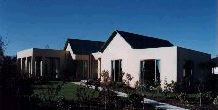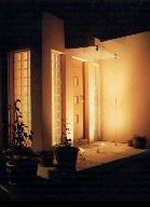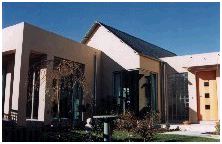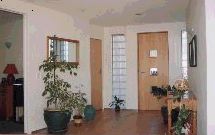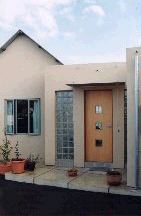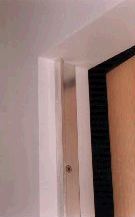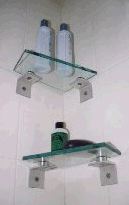• final year design project...
universalform...
gilkison house... temuka, south canterbury
CONCEPT
The brief for this project sought a modern, three bedroom, single storey home that was stimulating and comfortable to live in, low in maintenance, and efficient to run.
My intentions for this house, from the outset were very simple. I wanted to create a well defined structure, which performed well in terms of its spatial layout, yet offered spatial variation between the various residential functions.
Moving away from the more traditional mode of residential planning philosophy - involving the division of one large singular form into several smaller functions/rooms; my desire was to create a single unified composition of individually distinctive forms, unrestricted by any preconceived envelope.
Conceptually the house is a series of simple, box-like structures (individual 'units of shelter'), which collide in a picturesque composition of similar forms - each an articulate outward expression of its inner function.
Subtle shifts in orientation and elevation enliven the perceived transition between spaces, both on the interior, and when viewed from the exterior, giving each a distinctive identifiable 'personality'.
This design approach inherently imparts more external wall area, giving the opportunity for more windows, increasing the amount of light coming in, the views out, and the possibility of direct solar heating by the sun.
Interest, in the absence of applied ornament, is provided through the expression of the structure; the elements within that structure (simple, well constructed details); the relationship of the informal layout; and an honest use of quality materials.
CONSTRUCTION
Having completed the design and working drawings for the house, I managed to convince my parents that I should build it for them during my summer vacation. I contacted my brother in England, and talked him into returning home to lend a hand.
We began work in November 1997, with myself acting as main contractor, we subcontracted out all the specialist trades (e.g. plumbing, electrical, plastering, joinery etc.).
Building the house myself allowed me the opportunity to construct the dwelling exactly as I had envisioned it - sculpting the idea with my own hands (rather than simply representing the idea on paper), proved to be intensely satisfying, whilst providing a high degree of realism and intimacy with the process and the details of the project.
The act of 'making' the architecture; giving life to the idea, as well as perceiving it directly - smelling, hearing, tasting, seeing and touching the construction, creates an infinitely more intense and stimulating memory of the project.
Being on site every day also resulted in a much closer relationship between myself, as architect, and the specialist trades - effecting an environment of collaboration, rather than one of delegation.
The close relationship with the project, (and to the client) permitted me the opportunity to experiment with non-standard details - with the intention of simplifying the visual appearance of the structure and expressing the function of the integral elements of the house.
Where possible, frames, architraves, cornices, and skirtings have been omitted and replaced with cleaner, less conspicuous details.
All the internal doors are pivot hung, with aluminium angles fixed either side to close onto - instead of bulky timber frames. The aluminium windows, also have no reveals, or architraves, opting for gib board returns into the window opening, instead.
Structural glazing was implemented for the shower enclosure; shelving; and the 1200mm wide door between the living room and the lounge - allowing the maximum amount of light to penetrate.
Ornamental trim and facings were also omitted from the exterior, giving an overall appearance of uncluttered clarity and solidity. Individual elements such as downpipes and awnings over the front and rear entry were given their own unique identity, clearly identifying them as individual elements, with distinct functions.
Most of these details require a higher standard of quality workmanship, and more time to create (although, not necessarily more expensive), however, I believe they give a much simpler, more visually pleasing result.
After a slightly protracted ten month construction period, my parents moved into the house in early September, 1998.
